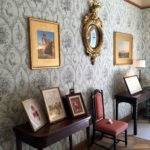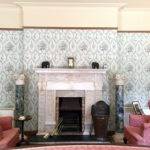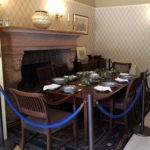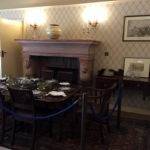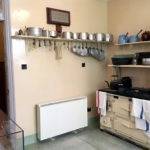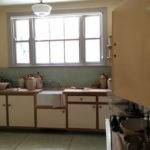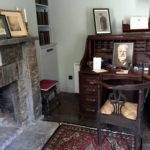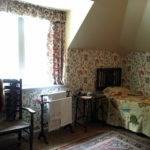The Drawing Room
In the early 1900s, the Bryces entertained frequently at their London house. 35 Bryanston Square was known as a Liberal stronghold, and meeting place for society figures, where the vivacious Violet hosted dinners, balls, charity concerts and lectures. She also held parties for her children to mark their ‘coming out’ in society and encourage encounters with potential suitors.
After the First World War, the Bryces entertained extensively in Ireland – tennis parties in the summer and bridge parties in the winter – and almost always had guests staying in the house or in the Casita, the summer house at the Italian garden. Afternoon tea was taken at the Casita when guests were playing tennis, or at the ‘Look Out’ through the French doors of the Drawing Room. In the evenings, guests retreated to this large, bright room with its comfortable sofas, mahogany side tables, books and artefacts. Music from the square wooden gramophone wafted through the air.
Among the artworks in the room are two lovely pencil and crayon drawings by the English artist, Edward Lear (1818–1888): The Himalayas near Nakunda and Kinchinjunga from Darjeeling. These two works were in keeping with the interests and travels of Roland’s father while his uncle James’s monogrammed linen table napkins can be seen alongside the Hammersley and Co. china tea set with the pale yellow border.
- Drawing Room in Bryce House. OPW.
- The Drawing Room in Bryce House. OPW.
The Dining Room
The Bryces and their guests enjoyed relaxed breakfasts, lunches and dinners here with the French doors providing good light and a view to the terrace. The room houses an imposing fireplace with heavy entablature supported at each side by fluted tapering pilasters topped with carved lion-heads and moulded capitals, and terminating in carved paw-feet and a square plinth. It is likely that it was originally intended for the mansion planned next to the Martello tower.
The table is laid with a 59 piece ‘Poppy’ ceramic dining set – one of several owned by the Bryces – alongside John Annan’s monogrammed napkins. Another set of fine china is stacked on the side board. The most remarkable items in this room however are the three Old Master drawings on the walls.
- The Dining Room in Bryce House. OPW.
- The Dining Room in Bryce House. OPW.2
The Kitchen, Larder, and Pantry
The kitchen was the domain of the Bryces’ housekeeper, Margaret O’Sullivan, who worked on the island for more than sixty years. Known to most as Maggie, her name became synonymous with the island. The youngest of twelve children of a farmer from Bocarnagh, three miles from Glengarriff on the mainland, she arrived at Garinish as a teenager in the 1920s to take the place of her sister who had emigrated to America. It must have taken some getting used to the call bell system that was more typically found in the servants’ quarters of larger town and country houses.
The pantry contains several fine china dinner and tea sets belonging to the Bryces, some of which may have come from their London house.
- The kitchen in Bryce House. OPW.
- The kitchen in Bryce House. OPW.
James Bryce Library
When John Annan Bryce, M.P., purchased Garinish Island in 1910, his elder brother James was British Ambassador to the United States of America and one of the most respected statesmen of the early twentieth century. The brothers were born in Belfast, County Antrim. They inherited a love of nature, mountain climbing and travel from their father who was a schoolmaster and Fellow of the Geological Societies of Dublin and London. In the 1840s, the Bryces moved from Belfast to Glasgow, where James and John Annan attended secondary school and university. Both men also studied at Oxford where James later became Regius Professor of Civil Law. In this capacity, he presented honorary degrees conferred by the university; the animal painter and sculptor, Sir Edwin Landseer, was a recipient in 1870. A brass plaque on the mahogany writing bureau displayed in this room reads: THIS TABLE BELONGED TO LANDSEER.
The library shelves are full of publications on various topics including several by James who was a very prolific writer. His book, The Holy Roman Empire (1864), established his international reputation as a legal historian while his classic study of American political institutions, The American Commonwealth (1888), won him many friends in political, educational and literary circles. A close friend and advisor of Prime Minister William E. Gladstone, he entered politics in 1880, sitting as a Liberal Party member in the House of Commons. He held a number of prominent cabinet posts and, after serving as Chief Secretary for Ireland, was sent in 1907 to Washington D.C. where he was a tremendously successful ambassador. King George V counted James as a friend and, after his death in 1922, sent condolences to his widow, Marion, Viscountess Bryce, stating that he had been ‘a trusted counsellor to whom I could always turn’. Commemorative busts were installed in the Trinity Church in New York and in the U.S. Capitol Building in Washington D.C. where Bryce Park was also dedicated to his memory.
- The James Bryce Library in Bryce House. OPW.
Violet L’Estrange Bryce’s Bedroom
The monogrammed items in this room belonged to Violet L’Estrange, the London society lady of Irish ancestry who married John Annan Bryce in 1888. Though born in Mauritius where her father was a British army officer, Violet always felt at home in Ireland and became attached to Glengarriff after first visiting with her celebrated cousins, Constance and Eva Gore-Booth of Lissadell, County Sligo.
After the Bryces purchased Garinish Island in 1910, John Annan set about planning a house and gardens while Violet set about promoting Glengarriff in an attempt to stimulate the local economy. She also established the Glengarriff Agricultural and Industrial show, using her political connections to garner government advice and financial assistance. A strong-willed and outspoken woman, Violet supported women’s suffrage, siding against her husband and her brother-in-law, the British ambassador at Washington, on the issue. Her daughter Margery was also a prominent suffragette and, owing to their connections, both women made headlines in the both English and America press.
- Violet’s Bedroom in Bryce House. OPW.
The whole of Bryce House has been carefully conserved to respect its historic integrity.



